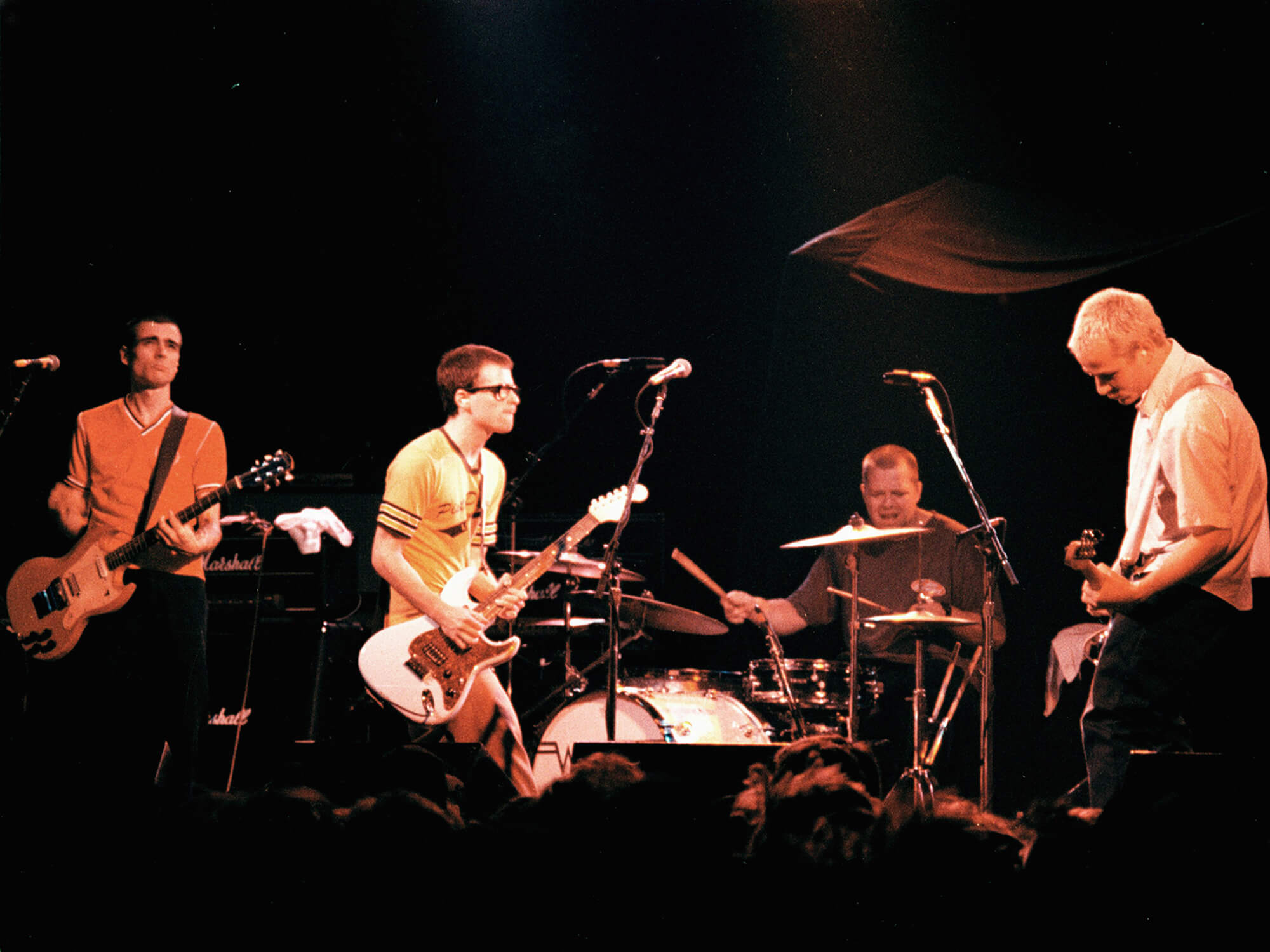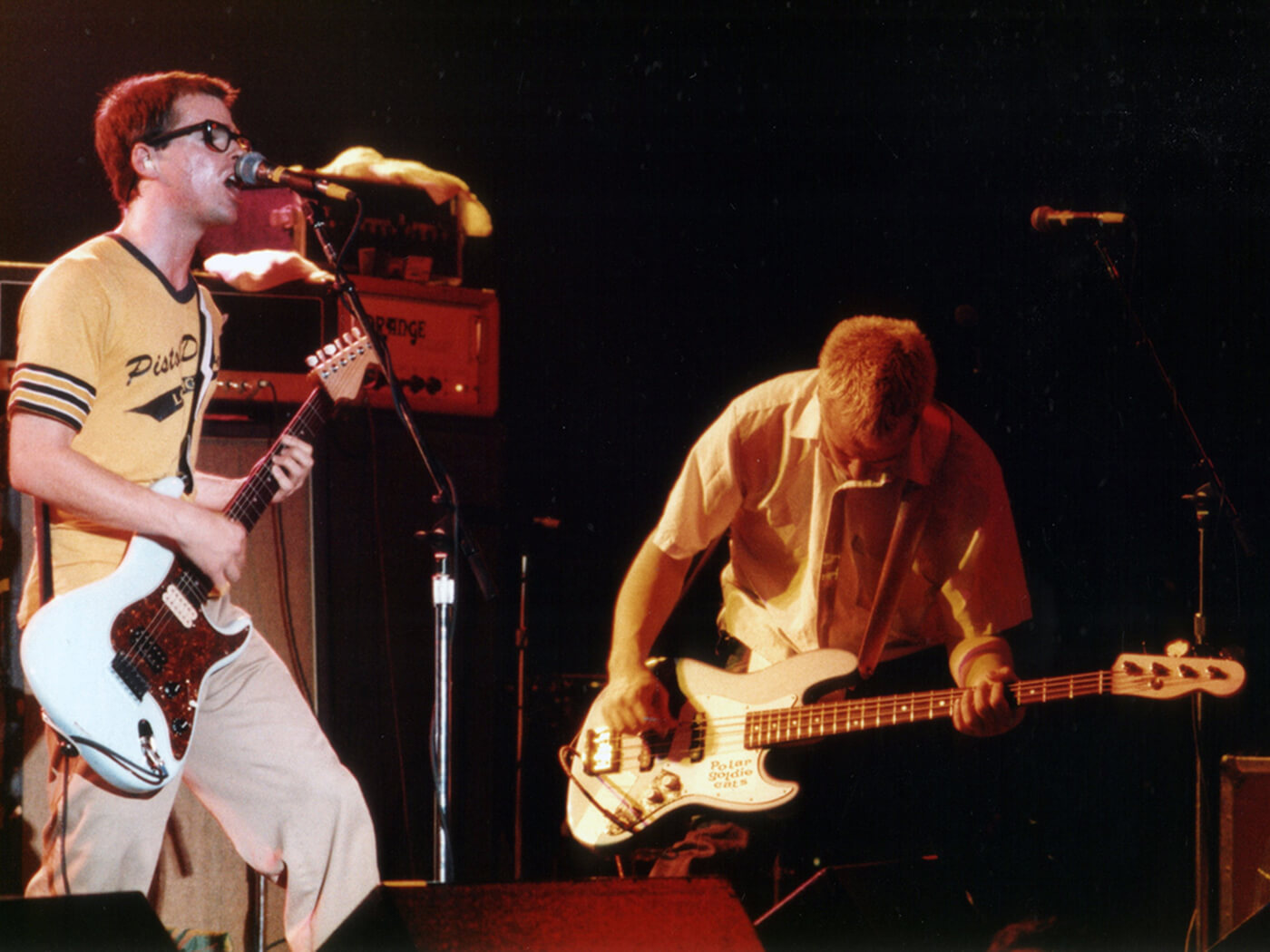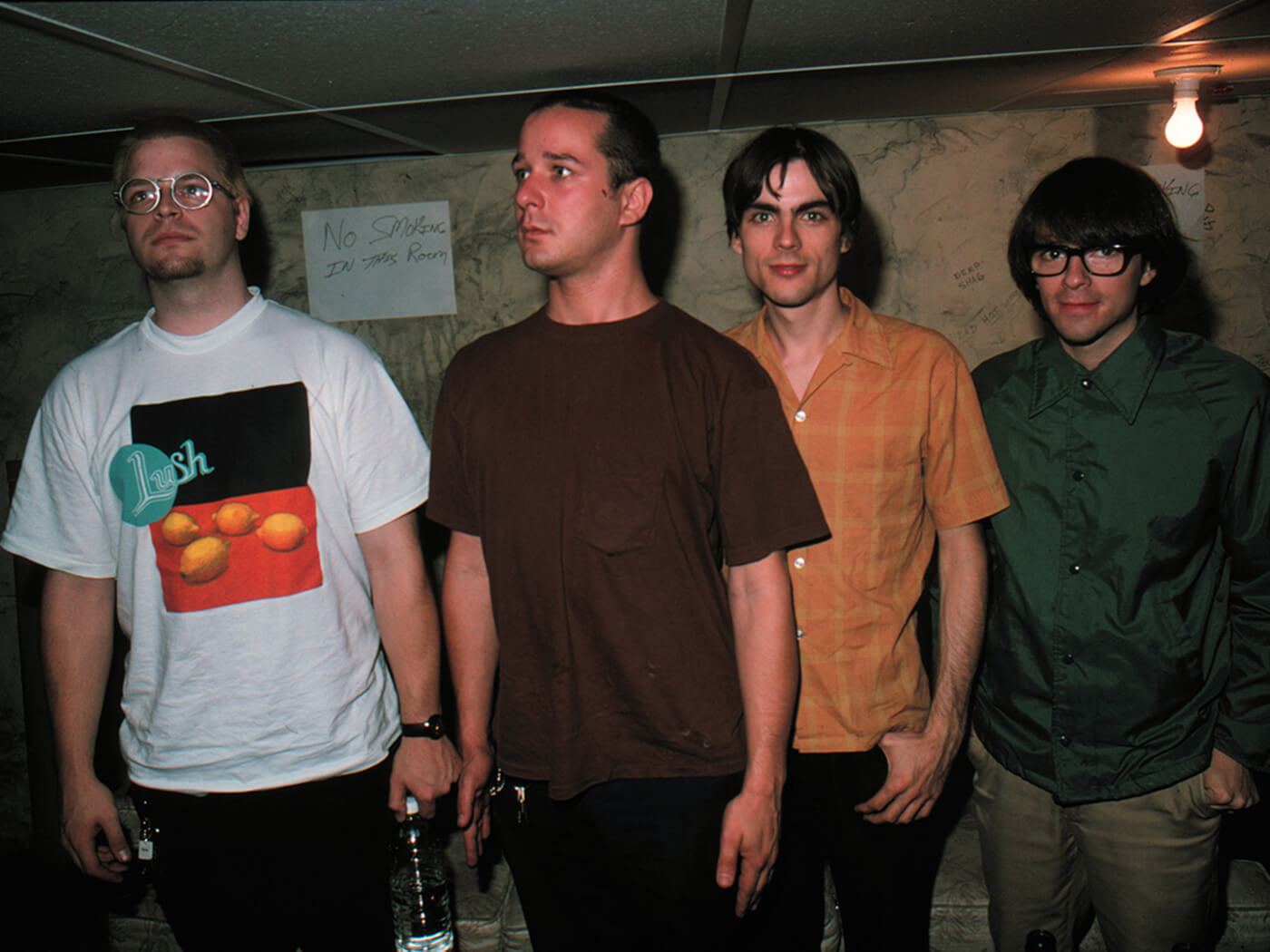The Gear Used by Rivers Cuomo on Weezer’s ‘Blue Album’
It’s one of the most important and influential albums of the 90s, but Rivers Cuomo’s gear on Blue was certainly not what he would come to be associated with…

Weezer performing in 1995. Image: Jim Steinfeldt/Michael Ochs Archives via Getty Images
Weezer’s debut self-titled studio album – universally known as ‘The Blue Album’ – is still considered by many to be the band’s high-water mark, even 30 years and 14 further albums later. While only hitting No 16 on the Billboard chart in 1994, its massive cultural imprint and huge influence on scores of bands who came after regularly see it featured at the sharp end of various best of the 90s album lists, and even the all-timers.
- READ MORE: The Genius Of… The Blue Album by Weezer
But it wasn’t expected to be that way when the band was recording the album in 1993. This was a turbulent period for the band, who were riding the wave of grunge and alternative music but taking it in a very different direction.
During the recording sessions, the band fired their guitarist Jason Cropper and brought in Brian Bell. Cropper’s guitar parts were re-recorded by band leader and guitarist Rivers Cuomo, and Bell re-recorded the backing vocals that Cropper had already laid down.
As with most things Weezer, the album was mostly Cuomo’s work. He wrote all the songs with co-writing credit only being given on My Name is Jonas, The World Has Turned and Left Me Here, and Surf Wax America, and as stated, he was also responsible for all of the guitar on the album itself.
Cuomo’s most famous guitar, his famous ‘Blue Strat’ has become synonomous with Rivers and with Weezer – he was rarely seen without it as songs like Buddy Holly and Say It Ain’t So became massive radio and MTV hits. This has often led people to assume that this guitar is the source of those tones, but this is not the case.

The story has it that Rivers began to piece the Blue Strat together, inspired by the dual humbucker-equipped red Fender Strat owned by Cropper. Rivers allegedly put the guitar together in the summer of 1993, brought it to the studio, and intended on using it. Cuomo discussed why he didn’t end up using his iconic Strat on the Blue Album in an interview on Chris Shiflett’s podcast, Shred with Shifty,
“It was ultra heavy and bassy-sounding, which sounds great when you’re playing by yourself and [thinking] this is huge, but in the context of an album when you have a bass player and you have another guitar player, all these frequencies covered by other instruments, you need a guitar that’s really punchy.”
Cropper has claimed that every day he was present for the sessions, Rivers was using the aforementioned red Stratocaster, but when Cropper left the band, he took his Red Strat along with him. While it is possible that some of the parts on the album were done on Cropper’s red Strat, Weezer sleuths (including Guitar.com alumnus and Weezer gear encyclopedia Mike ‘Puisheen’ Adams) agree that most of the album’s guitars were recorded with something totally different.

Rather than a Strat of any kind, it’s believed that Rivers primarily used a pair of vintage Gibsons — a Les Paul Special and a Les Paul Junior – borrowed from producer Ric Ocasek.
Ocasek was more famously known at the time as a member of The Cars, but by this point, Ocasek had already produced several notable albums dating back to 1980 including bands like Bad Brains, Suicide, and of course, The Cars.
The addition of Ocasek was somewhat of a compromise for Weezer, at the time, as Cuomo explained to Shiflett, “The record company said we had to have a producer; I didn’t want a producer but they insisted. One day I was in the grocery store, and I heard Just What I Needed. I was like, ‘Yeah that’s kind of what I want the Weezer record to sound like. So let’s get that guy.”
In addition to Ocasek’s fantastic ear, they also gained access to his collection of guitars. From that collection, we know at least three were used — a red 1960s Fender Jaguar, and the aforementioned red Gibson Les Paul Junior Special double cutaway, and Les Paul Junior Special, in yellow.
It is still unclear which of these guitars were used on which parts, specifically, but those, possibly along with Cropper’s red Strat were responsible for the electric guitar tones on the album.
Rivers also picked up an acoustic guitar, and brought it to the studio, where it was used on the intro to My Name Is Jonas and In The Garage. It was a 1974 Gibson; most believe this to have been a J-45.
This guitar met a unique demise – during the hiatus between Blue and it’s polarizing follow-up Pinkerton. Rivers had painful surgery to adjust an issue where one of his legs was longer than the other. The recovery required Cuomo to have his leg in a brace, and locked in a black-walled college dorm with nothing to do but play guitar, he wore a hole through the bottom of the guitar with the brace.
Rivers attempted to duct tape it back together and used it that way for a while but eventually it had to be retired. Its whereabouts are unknown. In a 2010 interview at Guitar.com, Rivers said that he has a J-45 at home that he does most of his writing on, but we are unsure if this is the same guitar or not.

Cuomo’s go-to amplifier during that era was a Mesa/Boogie Mk 1. The Mesa was run through a tall Marshall cabinet, often at unusually low volumes. Recording was usually done with a mixture of dynamic, condenser, and ribbon microphones. As for effects, Cuomo explained to Shiflett, “The only effects on guitar I think are on Only In Dreams – there’s a little bit of delay on the swells but apart from that I was very anti-effects.”
One of the album’s high points is the song Undone (The Sweater Song) which features some spoken interludes. The male voice belongs to Karl Koch, a friend of the band who is often cited as the fifth member of Weezer. The other voice belongs to Mykel Allen. Mykel and Carli Allen were sisters who were massive fans of Weezer early on.
They tragically passed away on the way home from a Weezer gig in 1997. Incidentally, Cuomo had written and recorded a song called Mykel and Carli which was released as a B-side to Undone in 1994. The song was recorded along with the other songs that appeared on The Blue Album but was cut due to time constraints but lives on as a very tragic, yet sweet, footnote in Weezer lore.
Weezer’s debut studio effort still stands the test of time and is rightly hailed as one of the greatest alternative albums ever made. The guitar tones on the record were elemental in creating the sound we all know as the Weezer sound today – but they’re not the instruments that Rivers himself is most closely associated with.




